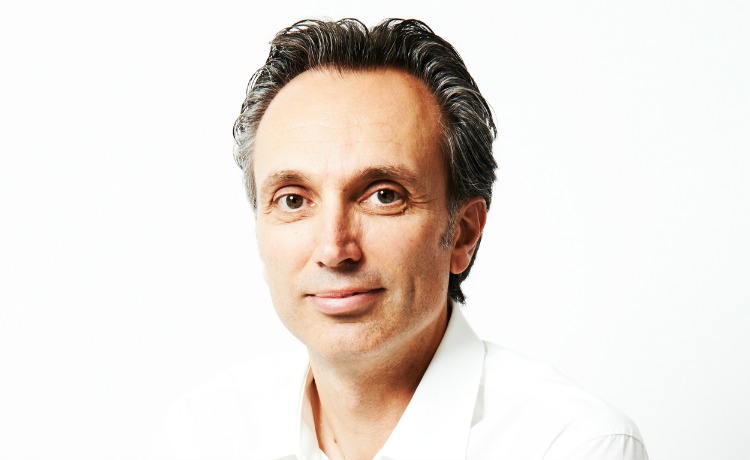Thomson on chatbots, the ‘microadventurer’ and its rebrand

Thomson is launching its last marketing campaign of 2016, as it looks to position itself as a modern travel company ahead of its rebrand to TUI next year.
The ad shows a young girl walking to her father at one of the company’s resorts in Crete. Moments are ‘frozen in time’ around her, showing a game of bat and ball and a couple sharing wine over lunch. The ad promotes TUI’s smile logo and is Thomson’s final yearly sign off before it becomes TUI.
We caught up with Thomson’s Jeremy Ellis to find out more.
How does the campaign relate to your rebrand to TUI?
The campaign comes prior to our migration to TUI next year but is all about continuing to build the trust and reliability the Thomson brand is about. We wanted to make sure Thomson stays consistent as a brand but that we continued with the migration, so we put TUI’s smile at the heart of it.
Over the past four to five years we have been trying to take Thomson from a traditional package holidays company to one that is more modern and will become TUI. We have done this through emotive storytelling rather than the sales advertising that was apparent 10 years ago.
READ MORE: TUI’s CEO compares Thomson rebranding to ‘renovating a house’ as it repositions business[1]
The ad is also about reinforcing quality time and we continue to build on the emotional stories seen in past campaigns, about how important quality time is with the people you love.
Mid December seems quite early for a travel ad, what made you launch it now?
We like to get ahead of the game before Christmas, just as Christmas advertising starts to die down mid December. At this time people are starting to think about what to spend their money on and Boxing Day is a key day for people booking holidays with us.
We also want to be front-of-mind for when people get to the booking period.
We have a clear strategy about being always on and multichannel. You can’t always be on on TV as it is so expensive, therefore we pick and choose channels to maximise reach to all our customers. We have broadcast TV, direct-response TV and our digital channels are always on.
We compliment our turn of year campaign with a lot of regional activity with UK airport partners and tourist board partners. In addition to this we have a few sponsorships that run all year round such as those with Scottish weather and First Dates. This means there are a number of different activities to maintain that always-on presence.
There are a lot of people that like the thrill of being independent and that’s fine, but they aren’t our core customers and never will be.
Jeremy Ellis, Thomson
How will you bring current customers with you as you migrate to TUI?
This has arguably been one of the longest brand launches in history – we first got the TUI smile back in 2002. Now all we need to do is make more people aware of the brand and fill it with meaning.
We’re starting to increase the presence of TUI across advertising and across the customer journey. It is really important for us to bring our current customers with us through the sense of trust they have for Thomson holidays. We want them to have the Thomson they know and love front of mind.
READ MORE: TUI goes all in on digital, scrapping brochures as it looks to shake off ‘traditional’ image[2]
Throughout the migration we will segment our current customer base into those we know are very loyal, those that use us on a regular basis, those on an infrequent basis and those that don’t necessary use us, and try to make them understand the benefits of TUI.
We will need to tell them that TUI has all the things they loved about Thomson but more. We will need to talk to consumers in whatever medium we feel is most important, including social, TV, letters and email. We’re already doing it in the destinations where TUI already exists.
 Jeremy Ellis, marketing and customer experience director at Thomson.
Jeremy Ellis, marketing and customer experience director at Thomson.What trends do you see for next year?
In terms of marketing tends, we are looking at assisted bookings through chatbots, which will allow us to share the rich knowledge people have overseas. We are continuing to develop our app and will do more with 360 videos. Snapchat is also becoming popular so we are currently doing tests and trialing how we might use it.
We are looking to provide more lifestyle content instead of our brochures, which were scrapped earlier this year. This may be online or in paper but will provide much richer content and hotel concepts.
How do you deal with the rise in people wanting to create their own experiences and companies such as Airbnb?
We’ve got a really clear strategy and its about end-to-end ownership of the holiday experience. The thing our customers value most is having control over the holiday experience because time is too precious to waste and they don’t want things to go wrong.
We’re sort of a wedding planner, sorting out people’s holiday needs and providing that end to end experience.
We are adopting our business model to suit the micro-adventurer, by offering more flexibility and more choice, but our audience still wants the security that everything will be fine and they will be looked after.
There are a lot of people that like the thrill of being independent and that’s fine but they aren’t our core customers and never will be.









